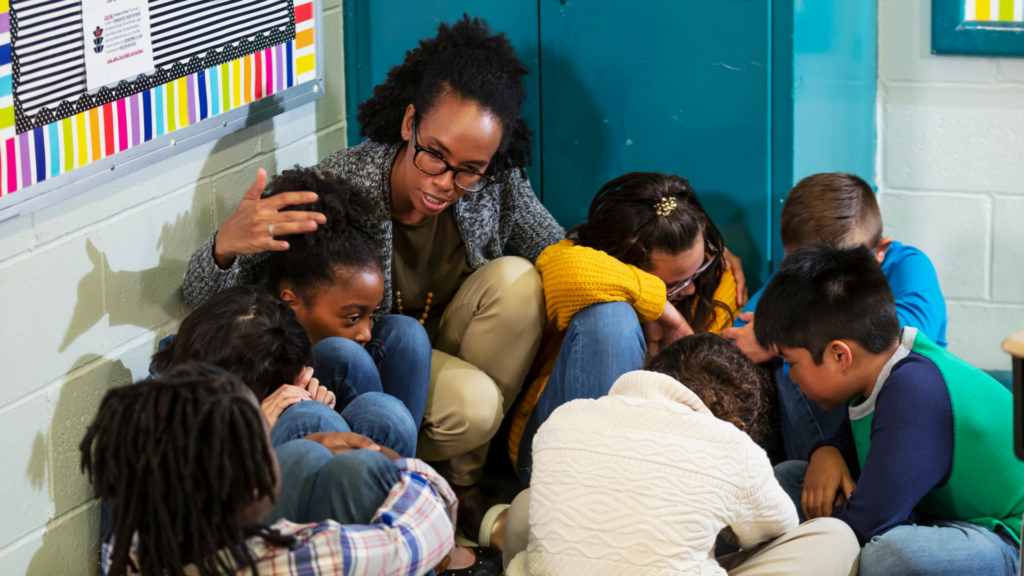
Last month marked the 20th anniversary of one of the worst school shootings in US history. The 1999 attack on Columbine High School that killed 13 people and wounded 24 set in motion a new era of school violence. After the Columbine tragedy, there has been an increase in school security measures to ensure the safety of their students, teachers, and staff.
Unfortunately, school-targeted attacks are on the rise across the nation, and educators are responsible for more than just educating our children. Schools have new and complex responsibilities most educators don’t have the time or the expertise to address.
Columbine was the first name in the ever-growing list of campuses turned into crime scenes. Columbine, Virginia Tech, Sandy Hook, Parkland, Santa Fe — each tragedy is a reminder that violence could happen anywhere at any time.
While threats to schools continue to endanger students and faculty, new tactics, tools, and technology have been developed to increase school security and keep students safe. Many of the schools we work with leverage a combination of security tactics to combat threats:
- Video Surveillance
- Access Control
- Critical Communication Systems
- Intrusion Detection and Shoot Detection System
Video Surveillance – More Than Setting Up Cameras
It’s easy to think that setting up video cameras is enough of deterrent, and while studies have shown that they do reduce crime by as much as 51 percent, that is not enough. Since Columbine, this is the area of school security that has probably seen the most growth. Between 2001 and 2015 security camera usage grew from 39 percent to 83 percent. But video surveillance systems also come with complex problems for schools like limited monitoring, poor physical set up, and no command center. Schools are also required to maintain records of video surveillance complicating the issue of storage.
To avoid being another tragedy, schools need to work with experienced security integrators to create a total solution approach to a surveillance system that shores up weaknesses and addresses the problems just mentioned. In the event of a crisis a fully integrated video surveillance system can help security teams and law enforcement identify and secure the intruder quickly while also monitoring the safety of the rest of the campus.
Access Control – Ensure Building Protection
Columbine and other shootings have shown how easy it is for a hostile actor to gain access to campuses and how easy it is for them to keep moving once they’ve entered. Schools need to ensure perimeter protection as well as visitor management and traffic flow. Students, faculty and parents are coming and going at all times on a school campus and access control goes beyond opening doors.
Critical Communication Systems – Crucial for Protection
In 1999, mass notification networks didn’t exist. There was no way of alerting the entire campus that they were under an attack. Critical communication systems and technologies like AI, 5G and IoT are making it easier to reach anyone at any time which is why they’re an important part of any school security plan. These systems use VoIP, IP stations and intercoms, and mass notification systems to get messages out. At Columbine, communication was an obvious flaw in the system. In times of crisis and chaos, reliable communication systems are a crucial step for protection.
Gunshot Detection Systems – Every Second Counts
In the case of a hostile actor, a gunshot detection system acts as the first point of protection. Most schools have multiple entrances and buildings spread across a large area making security monitoring a tough challenge. Think of a shot detection system as a fire alarm for gunfire. Small sensors validate the gunfire through sight and sound. If detected, an alarm is triggered for first respondents and building occupants. During the Columbine shooting, it took 47 minutes for SWAT team members to enter the school. A shot detection system eliminates that potentially costly wait time.
On average a shooting lasts from 5 to 7 minutes with a death occurring every 5 to 15 seconds—every second matters. Alarms need to be taken seriously and while no system can guarantee zero false alarms, working with an integrator during the installation process, you can take into account other noises that could trigger an alarm and mitigate it before it happens. The most important part of a shot detection system is that it is fully integrated with the rest of your security measures. In the event of an intruder other systems can be triggered including access control, surveillance, and mass communication. One without the other is a useless system.
Expertise in End-to-End Electronic Security Systems for K-12
The best school security systems may not be able to eliminate every threat, but they can help mitigate and lessen every threat.
When the four components of a school security are wrapped into one security system, even the largest schools can be prepared to handle any possible threat. Each aspect is critically linked to the next.
If you’re interested in learning more about how 3Sixty Integrated can help protect your school please contact us to set up a free consultation.

